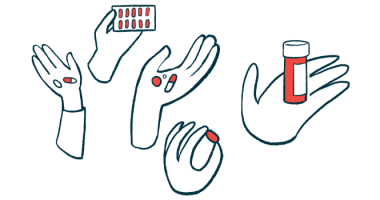Audentes Presents RECENSUS Study of Boys With X-Linked Myotubular Myopathy
by |

Data from RECENSUS, a medical chart review of boys with X-linked myotubular myopathy (XLMTM), demonstrates the significant medical burden for children living with the disease, a well as their families and caregivers.
Alan Beggs, PhD, director of the Manton Center for Orphan Disease Research at Boston Children’s Hospital, presented data from the study at last week’s 2017 Muscular Dystrophy Association (MDA) Scientific Conference, in Arlington, Virginia. The study was conducted by San Francisco-based Audentes Therapeutics, which has developed AT132, a gene therapy to treat XLMTM.
XLMTM is caused by mutations in the MTM1 gene. It primarily affects muscles used for movement (skeletal muscles) and occurs almost exclusively in boys. Children with this condition have muscle weakness (myopathy) and decreased muscle tone (hypotonia), both of which are usually evident at birth.
The review (NCT02231697) included 112 boys with XLMTM and aimed to provide further knowledge about the disease’s clinical manifestations and recorded medical management, and help design future therapeutic intervention studies.
According to the analysis, 44 percent of the XLMTM babies died during the study. On average, babies with the disease spent 35 percent of their time hospitalized and underwent an average of 3.7 surgeries. Furthermore, 95 percent of the babies were hypotonic at birth, and 90 percent needed some form of respiratory support. In addition, 48 percent needed 24 hours of ventilation and 60 percent underwent a tracheostomy. Even infants that were not ventilated 24 hours a day still required an average 8.5 hours on a ventilator.
On the positive side, the mean age at diagnosis had declined from 35.1 months in the late 199os, when the MTM1 gene was identified, to 4.4 months in the 2011-14 period. According to Audentes, this may be due to increasing clinical awareness of the disease, and better diagnostic methods.
“RECENSUS has established one of the largest data sets of XLMTM in the world, and this analysis makes a vital contribution to our understanding of this terrible disease,” Beggs said in a news release. “The RECENSUS study more completely defines the disease burden and management of XLMTM, and demonstrates the devastating impact that an XLMTM diagnosis has on the lives of patients and their families.”
Data obtained from this study will help determine the endpoints for future interventional studies in patients with XLMTM, such as measures of respiratory function, survival and burden of disease.
The goal of gene therapy for XLMTM is long-term expression of myotubularin after administration of a vector carrying the MTM1 gene. Myotubularin is the protein expressed by the functional MTM1 gene. AT132 is a novel product based on AAV gene therapy technology, which, according to Audentes, has been shown in preclinical studies to increase levels of myotubularin and improve XLMTM-related symptoms.
Audentes plans to file investigational new drug applications for AT132 with U.S., Canadian and European regulatory authorities in early 2017.







